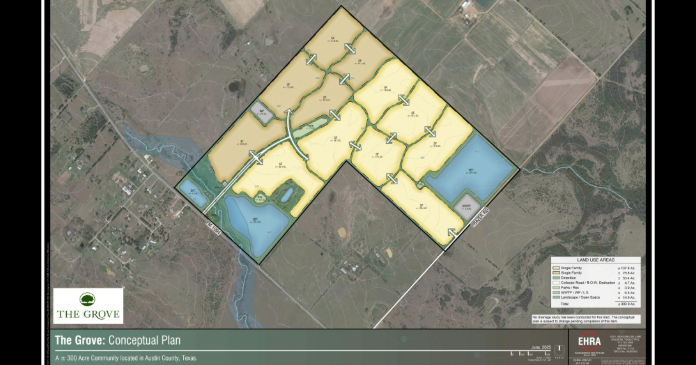Good data lies at the heart of every successful operation, but data, in itself, is just the proverbial stack of lumber. Without an understanding, or a plan for construction, it has no context and certainly no intention. Here’s how three major players in the industry gather and distill it down for owners’ best use.
Yardi
Yardi started life around 40 years ago as an accounting platform for apartment rentals and expanded over the past decade into providing services to multifamily operators to help them better run their assets. Yardi Matrix, an online, subscription-based technology company that provides up-to-the-minute market data to the commercial multifamily housing industry, was added to the Yardi family of companies with the 2013 acquisition of Pierce-Eislen, a comprehensive apartment market intelligence analysis system.
“Matrix is a tool kit, almost like a Swiss Army Knife, for commercial investment professionals,” Jeff Adler, VP of Yardi Matrix since mid-2014, said at the end of February.
That tool kit helps real estate professionals identify investment transactions, pre-underwrite and manage those deals and make critical buy, sell and hold decisions, once they have been acquired.
“We process the raw information and apply labor to it in a way that I think is kind of unique,” he said, explaining that Matrix does the heavy lifting that a lot of competitors in the space don’t do and a lot of Yardi customers don’t want to do.
“What we do is give people back time,” he said, explaining that there are five things that Matrix does extraordinarily well.
It pierces the corporate ownership of LLCs, identifying the owner’s representative on any particular asset, which requires a team of people to read the loan documents and confirm that asset manager’s identity.
Another team calls apartment properties to obtain information about asset characteristics and rents and collects unit mix details and floorplan combinations—not an easy task, said Adler.
“It’s easy to say a multifamily community includes one-, two- and three-bedroom apartments, but not so easy to say there are 12 one-bedroom, one-bath units that measure 750 sq. ft. and 13 one-bedroom, one-baths at 850 sq. ft.,” he said.
Matrix has yet another team of people who collect loan information on the 71,955 properties that house more than 13.6 million units that the company covers in 112 markets, including who sourced the loan and the amount and terms associated with it, which is then compiled into an abstract about that loan.
“That’s very unique,” he said, explaining that lenders, mortgage brokers and people sourcing transactions want to know a loan’s expiration schedule. Matrix also can provide them with a list of all the properties in a market for which a loan is coming due within the next 24 months.
It’s not certain what will happen to those properties, but, from an investment perspective, something will happen. “So, for people who make their living off of investment transactions, this is somewhat close to the Holy Grail,” Adler said.
“We have another team that focuses exclusively on properties that are in some form of new supply. They’re either zoned, have permits or are actually under construction, and we track the process of all those properties,” he said, explaining that today there are some 1.8 million units that are in some form of supply. About half are under construction and about half of those—250,000 to 300,000 units—are expected to deliver over the next two years.
Yardi Matrix also includes Context, a patented property and location rating system that Adler believes is another product unique to the industry.
Location ratings are reported as a letter grade and start at A+ for, say, the Tiffany of metropolitan area locations with views of the ocean or mountains, a high concentration of quality employment, shopping and an emphasis on upper income households. On the other end is D level where the surrounding neighborhood is a high-crime area with low-paying employment and very low income households.
“You could even pick out a funky neighborhood that’s surrounded by rivers or highways,” he said.
Apartment properties are rated on the same letter grade system ranging from A+ for the best metropolitan area apartment communities that include superior amenities and large units and are architecturally attractive down to the D level that designates a property with little to offer other than cheap rent and bare-essential amenities.
A Matrix subscriber might ask the system to list the best or worst parts of town in a given market, or for a B asset in an A location, or a C asset in a B location, which is, he said, like finding a needle in a haystack, but is an easy task using Matrix.
“We have coverage of basically everything over 50 units in all of the markets that we participate in, which covers 80 percent of the U.S. population,” he said.
Looking to the future, he said, Yardi Matrix is working on a couple of new features clients have requested, including two- to five-year forecasts of rents.
“In the past, we were just doing 12-month rolling forecasts and we would update that forecast every three to four months, so we partnered with some econometricians and developed a model and we are currently working on putting that into our product over the next several months to give us not only a 12-month forecast, but two- to five-year forecasts that allow our clients to do a better job on underwriting and acquisition modeling,” said Adler.
Yardi Matrix’s other big project involves occupancy, which is often hard to verify but is a valuable data element, he said.
His team found a new solution to that problem by forming a relationship with a vendor from the U.S. Postal Service. “We now take Postal Service records of mail being delivered and have mashed that up with our addresses and unit counts and now have a quantitative way to calculate occupancy,” he said.
“We’ll be releasing that in stages over the course of 2016 to different markets, as we are finished quality-controlling the data,” Adler said.
RealPage
RealPage, a provider of on-demand software and software-enabled services for apartment investors, operators and developers, promises unprecedented transparency into apartment markets with RealPage Investment Analytics, which was officially rolled out last July at the 18-year-old company’s 2015 RealWorld User Conference.
Leveraging MPF Research, which has been providing apartment market intelligence since 1961, and RealPage’s vast databases that are fed by more than 10 million rental units, Investment Analytics provides apartment investors, operators and developers with historical and forecasted market fundamentals.
RealPage started developing Investment Analytics about a year ago to take advantage of the company’s vast lease-transaction data that comes directly out of the rent rolls for the apartments to which the company provides services, Jay Parsons, RealPage’s VP of MPF Research, explained at the end of February.
“You’re really able to see performance trends and market shifts closer to real time,” he said, using recent activity in Houston as an example of how knowledge of lease trade-out numbers provided a much clearer picture of the situation there.
Everybody knew the Houston market was slowing, but traditional research data wasn’t really showing that. Before effective rent growth numbers really changed, Investment Analytics indicated that actually-transacted rents were coming in below what operators were asking and that units were sitting vacant longer and renter quality, in terms of income, was down a bit.
He explained that oftentimes the operators of those Houston apartments weren’t following their price schedules or their revenue management systems’ recommendations. That failure of lease compliance is something observable only by looking at rent rolls.
“In cases like that, we can see that operators are breaking the rules and that’s when these transacted rents are really important to have,” he said.
“Because of that, our clients were able to make decisions more quickly to adjust their strategy and decide about how to handle that asset,” Parsons said.
“We also have access to lease term lengths. Traditional research assumes a 12-month lease, but, in today’s world, with revenue management systems and seasonal management exposure, there are a lot more non-traditional lease terms,” he said, adding that Investment Analytics also shows clients renewal rent change.
“If you think about transparency, historically the whole market barometer has been new lease rent sticker price for the four percent of units that are vacant at a given time. Four percent transparency is not transparency. We now have visibility into the entirety of the rent roll, so we’ve gone from four percent transparency to 100 percent and we’re very proud of that,” said Parsons.
Forecasting market performance is another specialty of Investment Analytics.
“We’ve taken a game-changing approach to forecasting. We have models that are unique to each market,” he said.
“We have a system that helps us identify what economic and demographic factors are most important in each individual market and we’re able to forecast accordingly,” he said.
In addition, RealPage has a team of economists and analysts who know the markets and add their expertise to a very sophisticated model, he said, calling it “the real magic mix between the art and science of real estate.”
Investment Analytics’ market intelligence also includes apartment renter households’ incomes, he said, explaining that RealPage has a huge amount of data from residents moving into the apartments to which the company provides services ranging from property management to applicant screening.
Investment Analytics soon will include information about renter household demographic characteristics.
The company did a cluster analysis of apartment households across the country, looking at a number of different dimensions like age, marital status, children, income, number of lease signers and number of vehicles.
“So, for the first time, we have data that allows us to really understand the groups of renters beyond just their age profile,” Parsons said.
Renter household patterns of behavior is another aspect of the industry that soon will become part of Investment Analytics. That data will reveal what types of renters live in certain areas.
“Are they what we call Moneyed Millennials, which are high-income, tablet-carrying, fashionable young adults with good incomes, or does the area have a lot of what we call Mainstream Millennials, who are more middle class, making decent incomes, but not big incomes and aren’t living in the newest, nicest apartments?”
Investment Analytics gathers information about the apartment market in multiple ways. The rent roll data comes from properties that are using RealPage services.
“Additionally, we have the MPF survey data. MPF has had for decades a large call center where we are collecting the effective rent and occupancy rates,” he said.
The company also has a pipeline team that collects information about rumored, planned and permitted apartment construction and data from Real Capital Analytics, which is partnering with Investment Analytics to provide trend data on cap rates, price per unit and sales volumes, said Parsons of the platform that is available individually.
“Investment Analytics is a separate platform. We have clients who have nothing else from RealPage and we have clients who have the full RealPage platform,” he said.
RealPage received a lot of positive feedback on Investment Analytics at the RealPage 2015 conference, including the ability to display data in a desired form, like a chart that is custom built.
“You pick the market you want to see and literally push a couple of buttons and you can see that chart and the underlying data right there,” said Parsons.
Also receiving kudos was Investment Analytics’ mapping platform, which allows clients to take all the data about an area and see it in a heat map, then layer in the supply.
“Our clients told us, ‘This used to take us days and days to build and now we can just do it right there on the fly,’” he said.
“One of the things that we are soon to be releasing is an enhancement where we will be able to pinpoint market trends down to very small areas. Because we have so much data, we’re able to make assumptions about a location, even if a property isn’t at that particular street corner today. Based on what we know about the surrounding area and nearby assets at certain class levels, we know what the rents would be at that point,” he said.
In the future, RealPage plans to add more data to Investment Analytics that will help investors and developers discern where and when they should buy or build and what kind of renters they’ll attract in a certain area with a certain type of property, Parsons said.
MRI Software
MRI Market Comps simplifies the process of collecting current and accurate local competitive rent data in the highly dynamic multifamily market.
The solution enables subscribers to monitor the local competitive landscape for their multifamily assets, helping them to validate their pricing structure by comparing it to competing assets in a given market.
Market Comps pulls data from about 30,000 properties nationwide that use either MRI Market Connect (formerly known as VaultWare), MRI software or any of more than 30 Internet Listing Services (ILS) with which MRI has data sharing agreements. The broad nature of the data collected allows visibility into the availability and pricing for most of the market rate apartment communities in the country independent of the underlying property management system in use.
While many other competitive solutions scrape information about pricing and availability from ILS web pages, MRI Software is getting formal data feeds from the ILS community. In 2015, MRI increased the frequency of reports that share information gathered through automated collection from once a week to twice a week, in an effort to provide clients with the timeliest data possible.
The company boasts comparative pricing information for apartment properties operated by more than 3,500 management companies, “so the depth of information we’re receiving through Market Comps is significant,” said an MRI spokesman in a software video available on MRI’s website.
“Our clients are saving an immense amount of time and revenue by using Market Comps when compared to the traditional telephone/fax method of finding out about vacancies and how much competing properties are charging for rent. The traditional methods for getting comps are not only inefficient but they are also inaccurate and can be gamed by competitors,” said Brian Zrimsek, MRI’s chief products officer.
Market Comps subscribers can view competitors’ historical rents as an aggregate or separately, up to 24 months back, and also access a market’s rents by bed count and by square foot, and export that information to Excel for analysis and sharing with associates, either in the office or offsite via mobile device.
Further, Market Comps provides the ability to set alerts, an important feature of the platform. Even if they are out and about, users are notified of changes in the market that they have designated, like a $100 increase in a competitor’s rents at a particular location.
MRI Market Comps can be purchased independently or it can be bundled with MRI’s Multifamily Connect Suite.
“We think it’s more salable individually,” said Zrimsek explaining that one of MRI’s strategic differentiators is to allow clients choice and flexibility.














